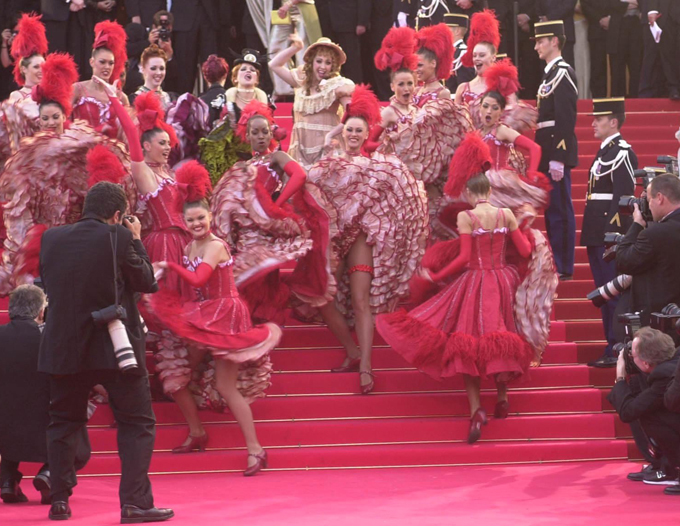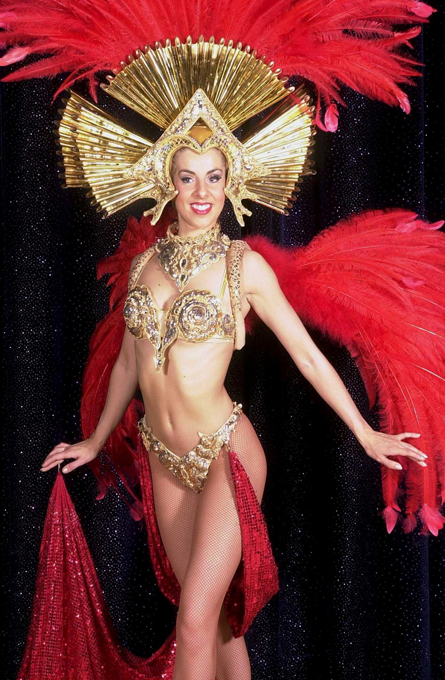Moulin Rouge: Birthplace of can-can dance

The original house, which burned down in 1915, was co-founded in 1889 by Charles Zidler and Joseph Oller, who also owned the Paris Olympia. Close to Montmartre in the Paris district of Pigalle on Boulevard de Clichy in the 18th arrondissement, it is marked by the red windmill on its roof. The closest métro station is Blanche.
The original house, which burned down in 1915, was co-founded in 1889 by Charles Zidler and Joseph Oller, who also owned the Paris Olympia. Close to Montmartre in the Paris district of Pigalle on Boulevard de Clichy in the 18th arrondissement, it is marked by the red windmill on its roof. The closest métro station is Blanche.

Среди наиболее известных танцовщиц были Иветта Гильбер, Ла Гулю и Жанна Авриль (Diamant - «Бриллиант»), которых Зидлер переманил из «Элизе-Монмартр». Пользовались популярностью также танцор Валентин Бескостный и клоунесса Ша-У-Као.
Среди наиболее известных танцовщиц были Иветта Гильбер, Ла Гулю и Жанна Авриль (Diamant - «Бриллиант»), которых Зидлер переманил из «Элизе-Монмартр». Пользовались популярностью также танцор Валентин Бескостный и клоунесса Ша-У-Као.

Today, the Moulin Rouge is a tourist attraction, offering musical dance entertainment for visitors from around the world. The club's decor still contains much of the romance of fin de siècle France.
Today, the Moulin Rouge is a tourist attraction, offering musical dance entertainment for visitors from around the world. The club's decor still contains much of the romance of fin de siècle France.

A new dance inspired by the quadrille which becomes more and more popular: The Can-can, danced to a furious rhythm by dancers in titillating costumes
A new dance inspired by the quadrille which becomes more and more popular: The Can-can, danced to a furious rhythm by dancers in titillating costumes

A place loved by artists, of whom the most iconic was Toulouse-Lautrec. His posters and paintings secured rapid and international fame for the Moulin Rouge
A place loved by artists, of whom the most iconic was Toulouse-Lautrec. His posters and paintings secured rapid and international fame for the Moulin Rouge

The early years of the Moulin Rouge are marked by extravagant shows, inspired by the circus, and attractions that are still famous such as Pétomane. Concert-dances are organised every day at 10pm.
The early years of the Moulin Rouge are marked by extravagant shows, inspired by the circus, and attractions that are still famous such as Pétomane. Concert-dances are organised every day at 10pm.

22 June 1951: Georges France, called Jo France, founder of the Balajo (rue de Lappe, Paris), acquires the Moulin Rouge and starts major renovation work. He gives architects Pierre Devinoy, Bernard de La Tour d'Auvergne and Marion Tournon-Branly the task of improving and fitting out the new auditorium. The décor envisaged by Jo France and largely realized by Henri Mahé, one of the most fashionable designers of the day, has lasted and is still in place
22 June 1951: Georges France, called Jo France, founder of the Balajo (rue de Lappe, Paris), acquires the Moulin Rouge and starts major renovation work. He gives architects Pierre Devinoy, Bernard de La Tour d'Auvergne and Marion Tournon-Branly the task of improving and fitting out the new auditorium. The décor envisaged by Jo France and largely realized by Henri Mahé, one of the most fashionable designers of the day, has lasted and is still in place

Since 1963 and the success of the Frou-Frou revue, out of superstition Jacki Clérico chooses only revue titles that start with the letter F. Naturally, the famous French cancan is performed at every revue
Since 1963 and the success of the Frou-Frou revue, out of superstition Jacki Clérico chooses only revue titles that start with the letter F. Naturally, the famous French cancan is performed at every revue

6 October 2014: Moulin Rouge celebrates its 125th anniversary.
6 October 2014: Moulin Rouge celebrates its 125th anniversary.



